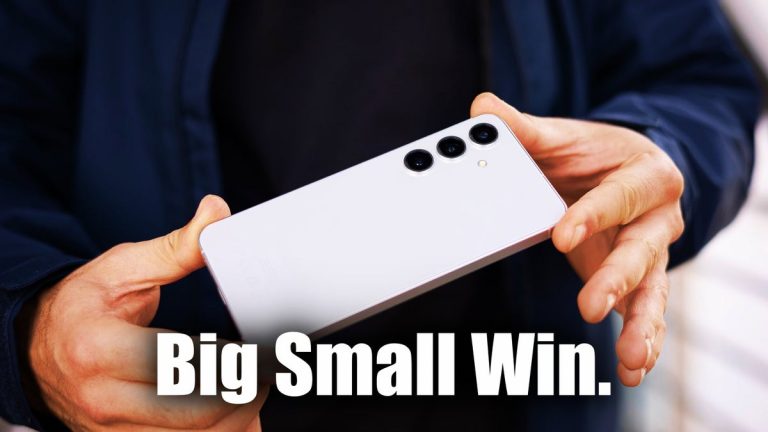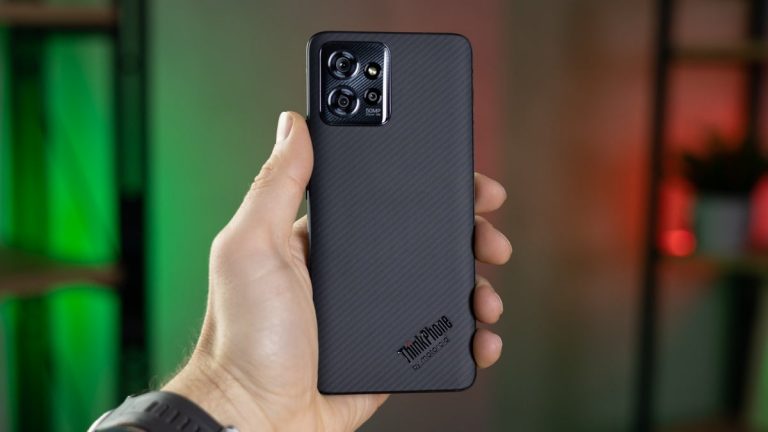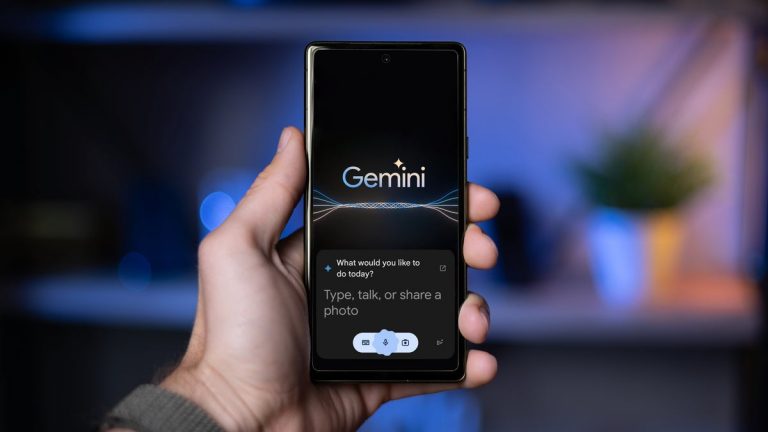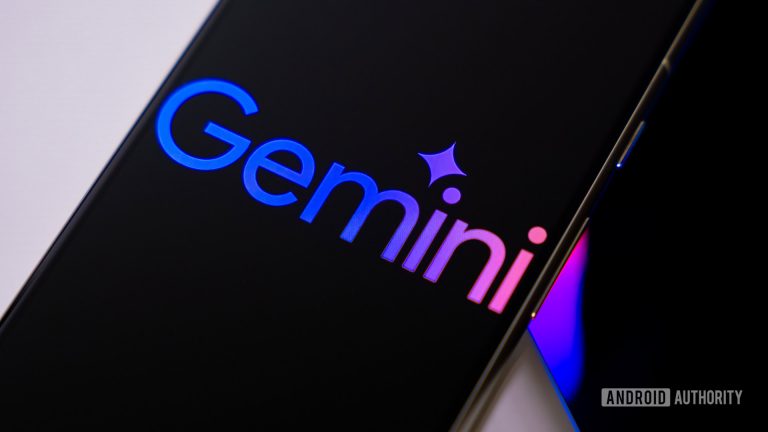Google Pixel Fold long-term review: Bold first step
It still surprises me that Google managed to get in on the foldable game as early as it did, but the original Pixel Fold was only ever better than it should have been, far from perfect. As its sequel is just over the horizon, the Fold’s distance from greatness feels as though it has only grown, but the foundation Google has built opened the door for a sequel that can actually close the gap.
The original Pixel Fold launched as a breath of fresh air into markets, such as the US, that were starving for book-style foldables. Samsung’s tried and true, but stale form factor in the Galaxy Z Fold series needed some true competition, and Google’s Pixel Fold arrived as something different and exciting. Google’s design was an exciting change of pace, and a bold step into the foldable space.
That largely came down to the display choices Google made. The Pixel Fold was the first mainstream foldable that focused on a landscape aspect ratio – Oppo tried this previously, but only on devices released in China.
It’s a decision that has its perks, but ultimately I feel was the wrong play on Google’s part.
The inherent advantage of a foldable that has a wide landscape display is that it’s great for multitasking, tablet apps, and media. But that also quickly comes up on the law of diminishing returns. Multitasking on a wide display is great, but there’s really no inherent advantage in the screen’s width. And when you go fullscreen, things just don’t play nicely. Android apps are getting better about tablet layouts, especially Google apps, but more often than not the Pixel Fold’s inner display ends up showing an app with huge black borders along the sides simply because that app is pointless on such a wide aspect ratio. It’s rather frustrating, especially when it’s a problem mostly unique to Google’s foldable. This doesn’t happen on the OnePlus Open or Samsung’s foldables. Even the better part of a year later, this is still a big problem, and a big damper on the experience.
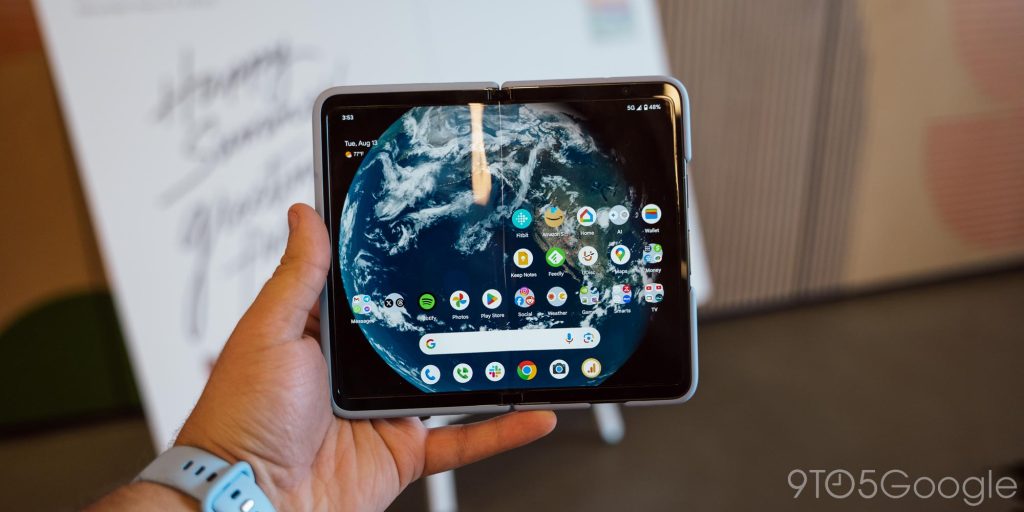
Another issue I took with the Pixel Fold’s width in my original review was the typing experience. On the inner display, the screen was just so wide that typing became cumbersome. That hasn’t changed much.
The perk to Google’s aspect ratio choice, though, is that outer display. The 5.8-inch panel is still gosh darn delightful to use. It’s wide and short, sure, but it’s so nice to use in a world of big slab phones. Our Abner Li largely used a Pixel Fold just as small phone, rarely opening it, and this outer display makes that a really compelling use case.
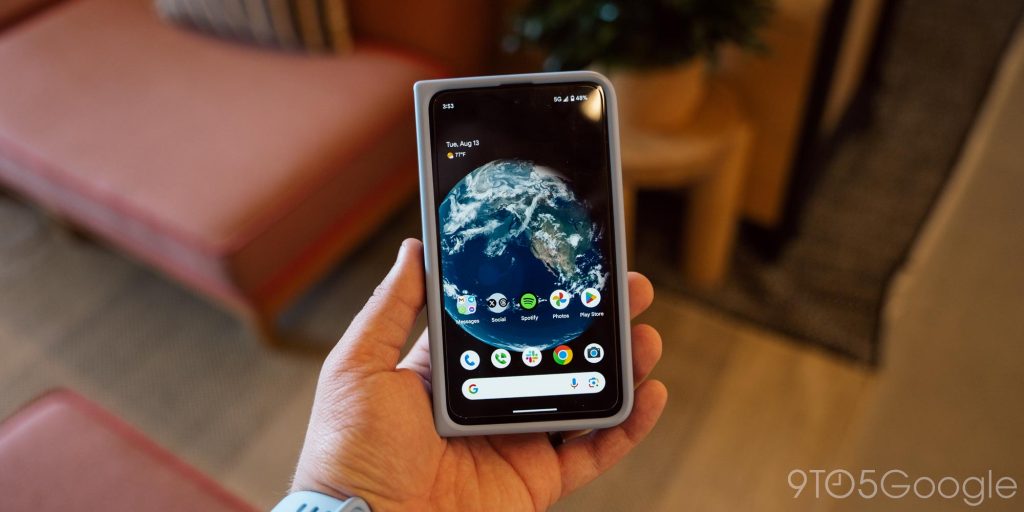
That said, the other big hardware problem of the Pixel Fold is the weight. While I’m not one to complain about a hefty phone for the most part, the 283g weight of the Fold makes it feel like a brick. A thin brick, seeing as it is the same thickness as Samsung’s Galaxy Z Fold 6, but a brick nonetheless. I still love a lot about the hardware and design here, but as the rest of the foldable market gets thinner and lighter, the Pixel Fold hasn’t aged well.
Of course, we also have to address the elephant in the room. The crease.
The display crease on the Pixel Fold was fine-ish at launch, but especially with use it has only gotten worse. The crease here is more like a crater. I still prefer it over the older days of Samsung’s crease being narrow and distinct, but again, as the rest of the foldable market has improved, this aspect of the Pixel has aged poorly. Similarly, I can’t get past the ultra-reflective finish of the inner display. It just makes a bad situation worse. The hinge has also not aged well, with the already-not-flat hinge just moving even further away from 180-degrees over time. But that’s a problem inherent to all foldables, really, with even the best hinges succumbing to losing a couple of degrees over time.
The final hardware problem is the biggest.
Tensor.
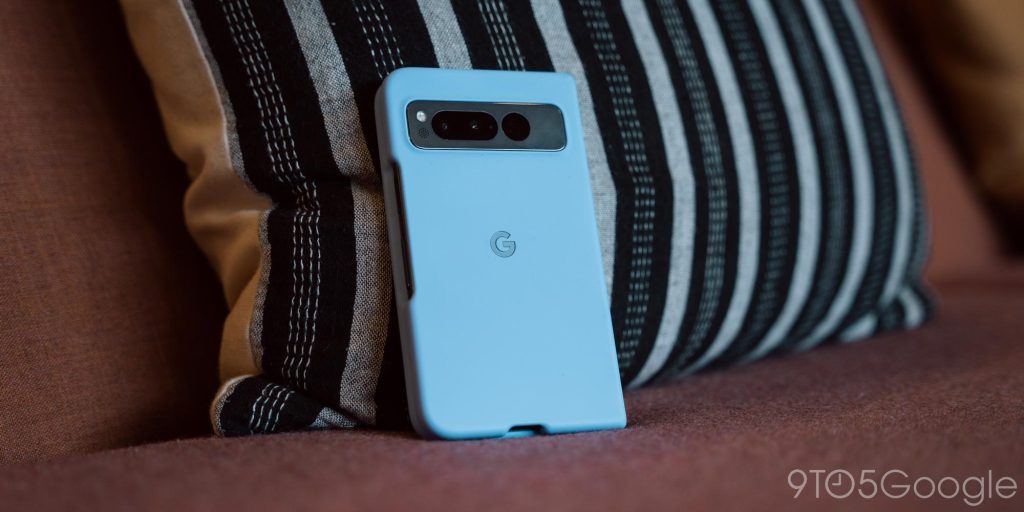
Google’s timeline for launching the Pixel Fold was unfortunately early, or late, depending on how you look at it. As a result, the device missed out on the considerable improvements that came in Tensor G3, leaving the Fold with the worst heat issues of any Pixel device. That’s not necessarily just because of Tensor G2, but rather because the Fold is what it is. Foldables inherently get hotter than normal smartphones because the parts of the device you’re holding are literally closer to the elements that product heat. Tensor G2 was totally bearable in the Pixel 7 series simply because those slab smartphones were thicker.
Heat issues on the Pixel Fold are plainly put unbearable in my mind. The device gets excessively hot in just normal use, and uncomfortably so if you push anywhere beyond that. More irritating for me were the times where the heat was completely unexplained. Just in the days I was revisiting the Fold, I ran into so many times where looking at static text and images in an app would lead to the device randomly getting extremely hot.
Tensor is also the cause of my main Pixel Fold issue on this revisit, which is battery life. It’s been simply atrocious. That’s likely in part because I’ve been running the latest Android 15 Beta on this device, but battery life has never been great on the Pixel Fold. It was acceptable back at launch (even rather good when primarily using the outer display), but now I feel like it drains just by looking at it.
Those are the bad things, and there are a lot of them, but what about the good?
For me, the biggest reason I still find the Pixel Fold compelling is, of course, the software.
The Pixel experience is simply stellar, and I strongly feel it works wonderfully on a book-style foldable. Where Samsung’s One UI is packed to the brim with features, the Pixel experience is simple and smart. Sure, you can only use two apps at once, but it’s easy to do and fluid. I think Google’s form factor choice with the wider canvas makes two apps make more sense, as three would feel a bit awkward. Even when I do use something like the Galaxy Z Fold 6, the vast majority of my multitasking time is using just two apps, rather than the virtually infinite number Samsung technically allows for. There’s absolutely an argument to be made for more multitasking features on a foldable, and it’s an argument I agree with. After all, I am a Galaxy Z Fold owner myself. But when you look to the rest of the experience, the delight and polish of Google’s take on Android is clean, simple, and just downright wonderful.
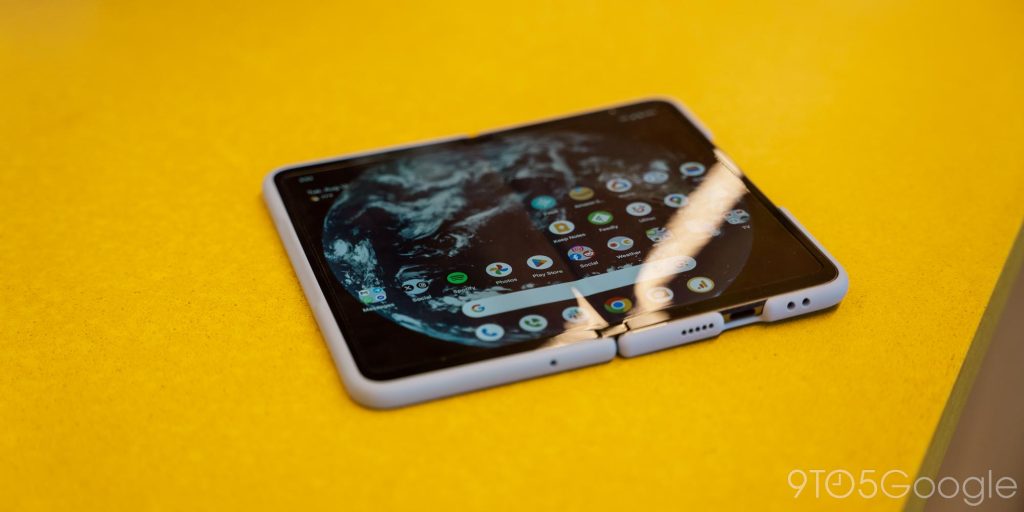
Just to throw out one example of the “delight” in Google’s experience, I still absolutely love the little vibration the Pixel Fold makes whenever you open or close the display. It’s just such a nice, unexpected touch.
There are also the cameras, which are still among the best on a foldable today. They take sharp, consistent, eye-pleasing images that I just love. And especially in a world where Samsung is still unable to deliver on that second point (even on non-folding phones), that’s a big advantage.
And, really, I think the aspect ratio also deserves credit here. Google tried something new and, while I ultimately think apps and Android itself are not ready for that, it was a good idea. There’s just something unique about the wide inner screen and “passport” like outer one. Whether they’re good or bad I think is really up to you, at least looking past the software issues that come with it. If Google had managed the same level of impressive hardware quality on the original Fold as it did on the sequel, I think a lot of the complaints would simply vanish.
Almost a year into its life, the Pixel Fold is a device I really want to love, but it’s pretty clear that this was just a stepping stone to something better. Google took a big, bold risk with this device, and I think it was a good one. But at the end of the day, I don’t think many will look back on this first generation all that fondly. Just like what happened with the original Galaxy Fold. It’s good, it’s better than many expected, but it needed some more time in the oven.
The sequel is just so much better because it learned from the original’s mistakes.
Apparently, Google has plans to keep selling the original Pixel Fold, too, but we’re still waiting to hear on what price that may come with. If it’s within spitting distance of $1,799, though, you should just go for the new one.


More on Pixel:
Follow Ben: Twitter/X, Threads, and Instagram
FTC: We use income earning auto affiliate links. More.
Source: 9to5google.com

